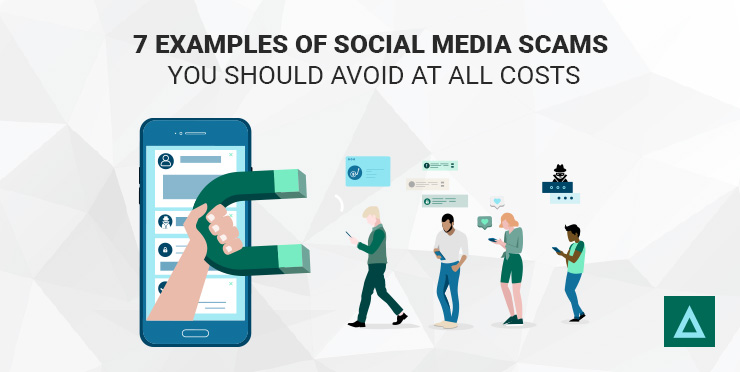
Social media platforms have become non-negotiables in our daily lives. We always find ourselves online at our favorite social media sites to connect with loved ones, share our thoughts, and discover interesting content.
While social media has become central to our routines, its vast reach and anonymity provide certain risks—they’ve become a breeding ground for scammers. Awareness is key to protecting yourself against social media scams. Here are seven examples of social media scams prevalent today that you should learn to recognize and avoid.
1. Phishing Through Direct Messages
Phishing scams don’t only exist in email. In fact, they’ve found their way to social media. Social media phishing is when scammers send their victims messages pretending to be from a legitimate source, whether a friend or a reputable company.
The messages often portray a sense of urgency, causing the victim to panic into clicking a link. The link then leads to a fake login page—and once you input your credentials, the scammer will be able to steal it and gain access to your accounts.
Whenever you receive a direct message on social media, always verify the sender's identity. Never click on suspicious links provided by a suspicious person.
2. Quizzes or Personality Tests
Quizzes and personality tests are prevalent on social media, providing what seems harmless fun to pass the time or discover new things about yourself. However, these tests have become goldmines for scammers due to their popularity.
When you open a quiz or personality test on social media, the platform will ask you for access to your profile information. Some scammers even go as far as tricking you into answering security questions. When you encounter a quiz or social media test that asks for unnecessary personal details or permissions, do not proceed.
3. Fake Giveaways and Contests
People love winning free things—and companies have used that to their advantage by providing giveaways and conducting contests on social media. But they’re not the only ones—scammers also use these to harvest user data or spread malware.
When you encounter a giveaway or contest from an unreputable company promising you valuable prizes in exchange for your personal information, don’t fall into the trap.
Remember that genuine giveaways will always be conducted through a company’s official channels—and they won’t ask you for sensitive information to participate.
4. Impersonation of Family and Friends
One of the primary uses of social media is to stay in touch with family and friends. Scammers have used this to carry out their agendas, creating fake profiles to impersonate people close to you. They’ll use these fake profiles to pretend to be your family member or friend, claim to be in an emergency, and ask for financial assistance.
Before extending help to anyone, always double-check the identity of the sender. Contact the person through other means, like a call, text, or email, to confirm they sent you the message before taking any action.
5. Get-Rich-Quick Investment Schemes
People are easily lured by investment schemes promising them significant earnings and easy money. That’s why these are often plagued with scams. Scammers can use fake testimonials and manipulated images to pretend to be a legitimate investment opportunity and lure you in with a promise of high returns for minimal investment.
To protect yourself from this, remember one thing: If an investment opportunity sounds too good to be true, it probably is.
6. Romance Scams
In 2023, 64,003 people fell victim to romance scams, which caused losses totaling $1.14 billion ($2,000 per person)—the highest loss for any imposter scam. Due to the popularity of online dating, it’s easier for scammers to fake a romantic relationship with a victim to gain trust and, ultimately, harvest financial assistance.
Romance scams start with the scammer creating a fake profile used to form relationships with one or multiple victims. Once they have established trust, they create a scenario that requires financial help. Because trust has been built and the victim has become romantically invested, they will quickly fall for the scam and wire the money over.
To protect yourself from romance scams, be cautious about online relationships and watch out for red flags, such as when the person is quick to profess their love or asks for money.
7. Job Offer Scams
Work-from-home setups are all the rage these days, with so many office employees actively seeking remote jobs instead of office work. But scammers are preying on job seekers, offering attractive work-from-home opportunities that sound too good to be true.
When the job seeker accepts the offer, the scammer will then require their personal information or an upfront fee to get started with their employment.
Remember that legitimate employees, online or otherwise, will never ask for payment from you as a condition for employment.
Protect Yourself on Social Media
People are losing over $2.7 billion in total losses due to social media scams. That figure alone should be enough to convince you to be cautious online. When on social media, always think before you click and adopt a skeptical attitude towards unsolicited messages or offers. When in doubt, always err on the side of caution.
As always, the best defense against data breaches is awareness. Check out our Cyber Security Hub for free and shareable content on how to keep your private information private.


